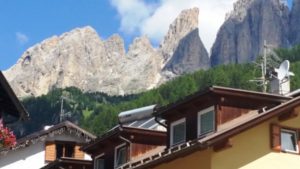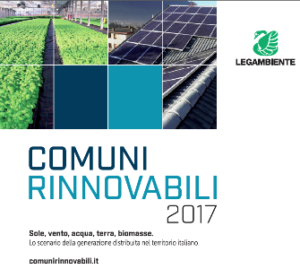Solar thermal plays minor role in Italy’s energy strategy
December 15, 2017
 Solar thermal had been mentioned in only five lines in the first draft of Italy’s National Energy Strategy in June 2017, before public consultation took place. The aim of the document has been to set objectives and provide scenarios for national energy supply and demand until 2030. The country’s Ministry of Economic Development, which developed the Strategia Energetica Nazionale (SEN), received more than 1,000 comments in June and September 2017 and published its final version on 10 November 2017 (find both documents attached). Though the strategy paper contains promising renewable and energy efficiency targets, solar thermal – and heating and cooling in general – will continue to play second fiddle to natural gas.
Solar thermal had been mentioned in only five lines in the first draft of Italy’s National Energy Strategy in June 2017, before public consultation took place. The aim of the document has been to set objectives and provide scenarios for national energy supply and demand until 2030. The country’s Ministry of Economic Development, which developed the Strategia Energetica Nazionale (SEN), received more than 1,000 comments in June and September 2017 and published its final version on 10 November 2017 (find both documents attached). Though the strategy paper contains promising renewable and energy efficiency targets, solar thermal – and heating and cooling in general – will continue to play second fiddle to natural gas.On 231 pages, the initial SEN draft contained only one sentence on solar thermal, stating that the technology “has prompted not enough cost reductions and innovations. Manufacturers and installers need to ensure that this technological option can play more than a marginal role in the future.” The statement elicited a sharp rebuke by the sector and industry association Assolterm in particular. The organisation highlighted how advanced the technology had become and how it could help create local jobs and generate business. Its position was published, for example, in an article on Italian website QualEnergia.it in June.
Small improvements through consultation
The consultation process began on 12 June 2017, with the deadline for submissions set to 12 September. The economic development ministry, which developed the SEN jointly with Italy’s environment ministry, received 251 comprehensive input and 838 comments on the topic and organised 40 meetings to negotiate revisions with important stakeholders.
In the final version of the SEN, aside from the paragraph which had already been part of the first consultation document, solar thermal is likewise viewed as a “sufficiently advanced technology, which has not yet shown potential for cost reductions”. Additionally, the authors stressed that “despite several incentive schemes, the market has been slowing down for some time. It will be important to find solutions which would allow for the use of this technology in sectors besides the residential one.”
Two SEN charts illustrate price development in Italy’s solar thermal sector. Whereas the specific turnkey costs of small pumped residential systems have remained nearly stable over the last 6 years, large-scale solutions are being planned at much lower costs of around 300 EUR/m² (see the chart below). The SEN authors believe that solar thermal is “a particularly interesting option in the case of smart and demand-responsive district heating networks, where multiple energy sources are working in concert.”

This chart combines two SEN graphs to show the investment costs of small residential vs large-scale applications
Source: SEN
Renewable heat targets
Regarding renewable heat, the SEN’s 2030 target is to meet 30 % of demand, up from a baseline of 19.2 % in 2015 – but only 1 % should come from solar thermal. The authors of the document underline that heat pumps “need to play a key role in meeting this target because of their high efficiency”, while biomass “has to focus on limiting emissions and increasing environmental quality” and, lastly, that “the potential of district heating must be tapped”. There is no specific mention of solar thermal’s role in fulfilling the 30 % objective.
Recently, FREE – an umbrella organisation of more than 20 associations promoting renewables and energy efficiency – has said that “given the current limitations on bio-energy and the lack of trust in solar thermal, such a target will not be attainable by using heat pumps only.”
National targets beyond renewable heat
- Renewable electricity to grow from 33.5 % in 2015 to 55 % in 2030
- Renewable use in the transport sector to increase from 6.4 % in 2015 to 21 % in 2030
- Energy efficiency to reduce consumption by 30 % by 2030, based on a business-as-usual scenario
- Coal for electricity generation to be phased out by 2025
Organisations mentioned in this article:
Assolterm (Italy’s solar thermal industry association): http://www.assolterm.it
Ministry of Economic Development – SEN: http://www.sviluppoeconomico.gov.it/index.php/it/energia/strategia-energetica-nazionale


